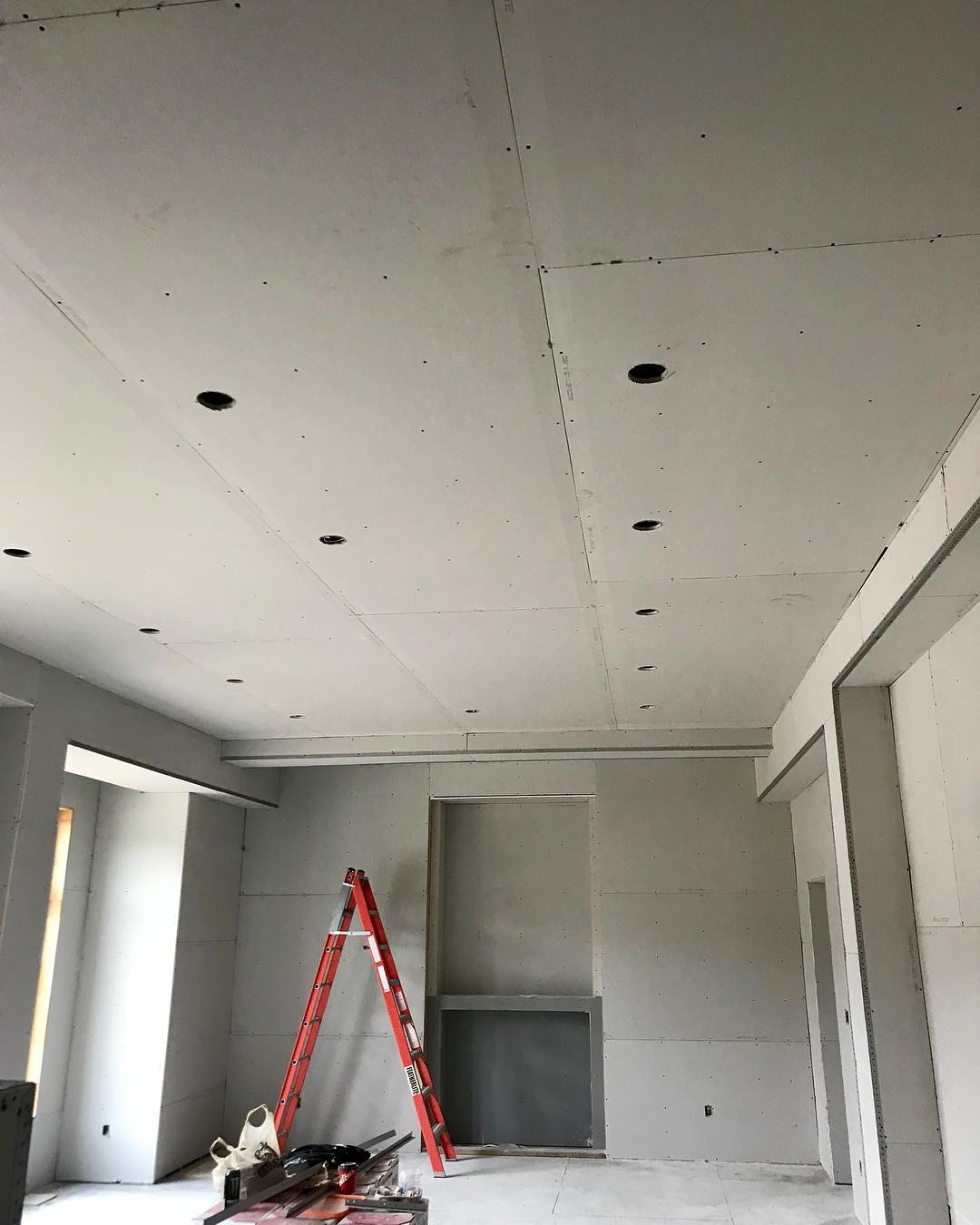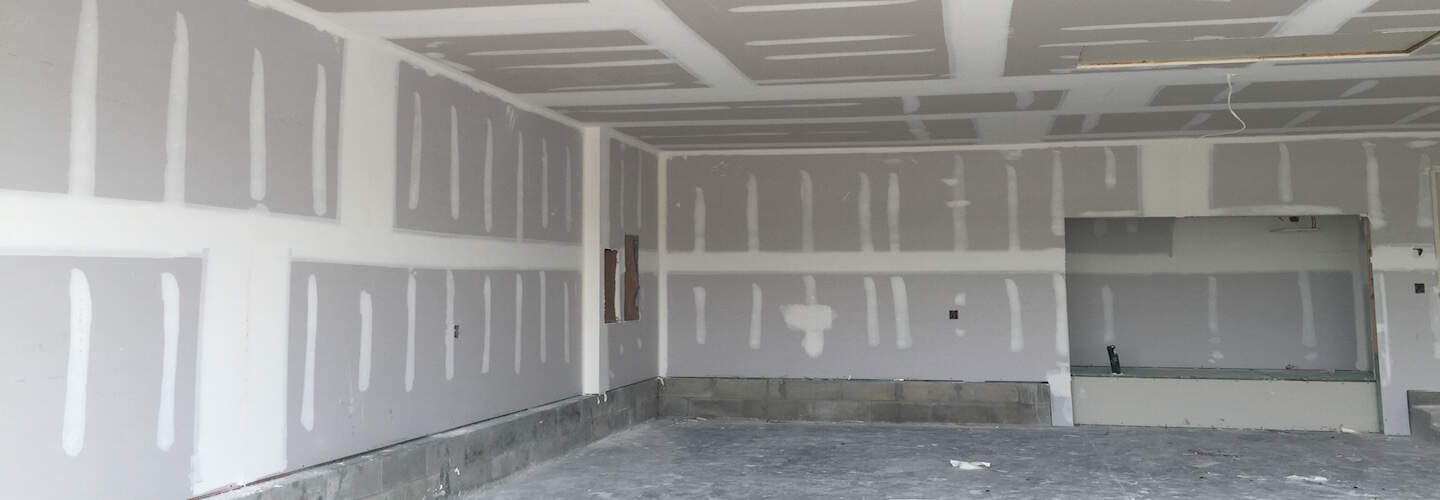The Ultimate Guide to Drywall Edmonton Services
Wiki Article
Every Little Thing You Need to Know Concerning Drywall Installation: A Comprehensive Guide

Recognizing Drywall Essentials
Recognizing the fundamentals of drywall is important for any type of effective installation job. Drywall, likewise called gypsum board or plasterboard, is a preferred building and construction product made use of to produce interior walls and ceilings. It contains a gypsum core sandwiched between two layers of paper. The gypsum core provides the essential stamina and rigidness, while the paper layers safeguard the core from damage and offer a smooth surface area for finishing.
The most usual types include routine drywall, moisture-resistant drywall, and fire-resistant drywall. Normal drywall is appropriate for many indoor applications, while moisture-resistant drywall is suggested for areas with high humidity, such as washrooms and kitchens.
An additional key aspect of drywall basics is understanding the typical sizes and thicknesses available. The most common dimensions are 4x8 feet and 4x12 feet, with densities ranging from 1/4 inch to 5/8 inch. Thicker drywall is normally made use of for applications that require raised fire resistance or soundproofing.
Devices and Products Needed for Drywall Installation
To efficiently set up drywall, it is critical to have the essential devices and products available (drywall Edmonton). These tools and products are vital for attaining an expert coating and guaranteeing the sturdiness of the installationPrimarily, you will certainly require a gauging tape to precisely gauge the measurements of the location where the drywall will be set up. An energy blade is important for cutting the drywall to the required shapes and size. Furthermore, a drywall saw can be utilized for making much more intricate cuts, such as around electrical outlets or windows.
Following, you will require a screw gun or a drill with a screwdriver little bit to safeguard the drywall to the wall studs. Screws, especially drywall screws, are needed for connecting the drywall to the studs. It is very important to use the proper size of screws to ensure a safe and secure and flush setup.

In regards to materials, you will certainly require the drywall itself, joint substance for filling out spaces and seams, and tape for enhancing the joints. Sandpaper or a fining sand block will certainly be required for smoothing out the joint compound after it has actually dried out.
Preparing the Area for Drywall Installment
Before continuing with the drywall installation, it is vital to appropriately prepare the area to guarantee a successful and smooth setup procedure. Preparing the space involves a number of essential actions that require to be adhered to carefully.Firstly, it is important to get rid of the location of any type of furniture, components, or various other objects that might obstruct the installment procedure. This will offer the installers with ample room to function and navigate around. In addition, it is advisable to cover the floorings and any type of continuing to be products with safety sheets or ground cloth to protect against any kind of damage or particles from falling onto them.
Next, it is essential to examine the walls and ceiling for any kind of existing damages, image source such as fractures, openings, or water spots. These problems ought to be fixed before the installment to guarantee a smooth and even surface for the drywall. Any type of loosened paint or wallpaper need to likewise be removed, and the walls should be completely cleansed and dusted.
Moreover, electric and plumbing fixtures should be shut down and protected to avoid any kind of crashes or damages during the installation procedure. It is critical to shut off the power supply to the location and remove any kind of electrical cover layers prior to starting the setup.
Lastly, it is suggested to consult with a professional or refer to regional building ordinance to make certain compliance with security regulations and acquire any type of necessary licenses prior to waging the installment. By correctly preparing the space, you can guarantee a successful and effective drywall installation process.
Step-by-Step Guide to Hanging Drywall
To ensure an effective drywall installment, it is necessary to adhere to a step-by-step overview for hanging the drywall (Edmonton drywallers). This process requires precision and attention to informationFirst, gather all the needed tools and products, consisting of drywall sheets, an energy blade, a drywall saw, a measuring tape, a drill, and screws.
Following, start by measuring the dimensions of the wall surface or ceiling where the drywall will be installed. Transfer these dimensions onto the drywall sheets, marking where cuts require to be made - drywall repair. Make use of a straight edge and an energy blade to score the drywall along the marked lines, after that snap it along the score line
As soon as the drywall sheets are cut to size, they can be hung on the wall or ceiling. Begin at one edge and place the very first sheet up and down versus the framing. Use screws to secure the drywall to the studs, seeing to it to leave a tiny gap between sheets for growth.
Proceed this process, working your way throughout the wall or ceiling. Ensure that each sheet is degree and flush with surrounding sheets. Utilize a drywall saw to eliminate any needed openings for electric outlets or switches.
Completing Methods for a Specialist Appearance
Now that the drywall sheets have been successfully hung, it is vital to employ ending up techniques that will certainly cause a polished and professional look. Accomplishing a flawless and smooth finish on drywall calls for cautious attention to detail and using correct tools and strategies. One of the very first steps in the completing procedure is to fill the joints and screw imprints with joint compound. This can be done by using a slim layer of compound over the joints utilizing a taping knife, and afterwards embedding drywall tape into the compound. When the tape is in place, an additional layer of substance need to be used over it, feathering the edges to create a smooth transition. After the compound has dried out, it is essential to sand the surface area to remove any type of imperfections and create a seamless coating. A pole sander or fining sand block can be utilized for this objective. The wall surfaces must be topped and repainted to complete the ending up process. Using top notch paint and applying it equally with a roller or brush will guarantee a durable and specialist finish. By adhering to these finishing strategies, your drywall installation will certainly have a specialist and refined look.Verdict
In final thought, comprehending the fundamentals of drywall setup is essential for a successful task. By using the correct devices and materials, preparing the room effectively, and adhering to a detailed overview, one can attain a professional-looking finish. Attention to finishing strategies will More about the author certainly even more enhance the overall look. With this thorough overview, anybody can with confidence tackle a drywall setup project.The Discover More Here most typical types include regular drywall, moisture-resistant drywall, and fire-resistant drywall. Regular drywall is appropriate for many indoor applications, while moisture-resistant drywall is recommended for areas with high humidity, such as cooking areas and bathrooms. Screws, specifically drywall screws, are needed for connecting the drywall to the studs. These issues need to be fixed before the installment to ensure a smooth and even surface for the drywall. By following these ending up techniques, your drywall setup will have a refined and expert look.
Report this wiki page